
Chaotic and violent riots are not exactly what you hope for when you visit a new destination, but that is exactly what we got when we arrived in Quito. As the capital of Ecuador, Quito is typically a popular tourist city. When we flew into the city on October 11, 2019, it was a very different place.
We had initially planned to spend a week or two in Quito, exploring the city and meeting tour operators to negotiate a good deal on a last-minute cruise around the Galápagos Islands.
We were generally aware that some protests were happening in connection with a bill passed to eliminate a fuel subsidiary, but we had not heard much else about it.
Our understanding was that the protests were peaceful, and there would be nothing to worry about as a tourist. As soon as we got into our Uber from the airport, we realized we might have underestimated the gravity of the situation.
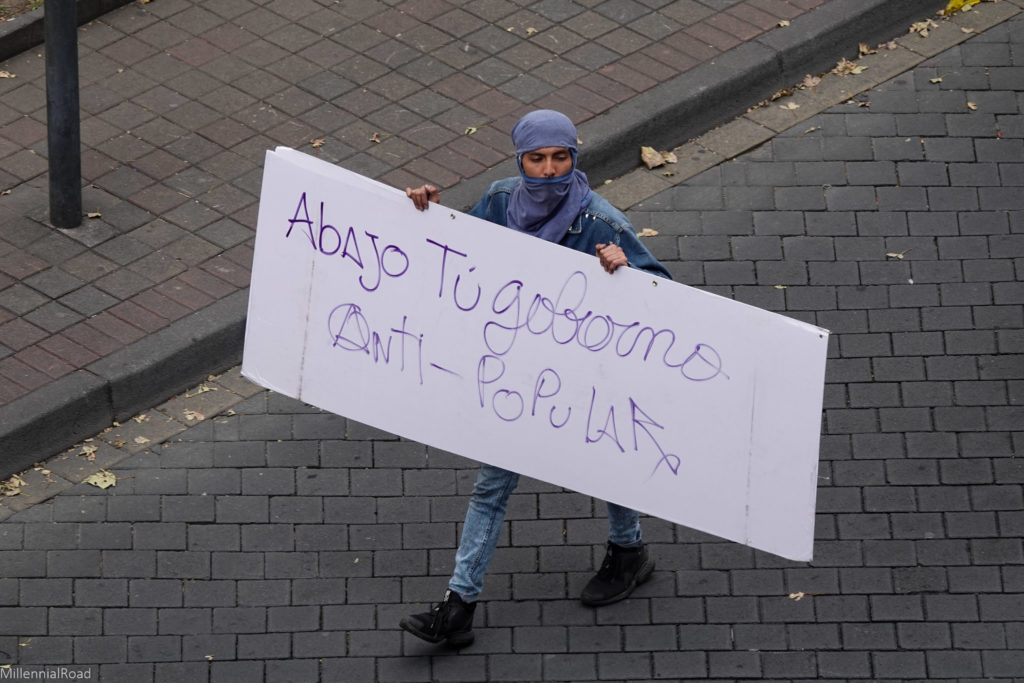
The protests had apparently started escalating within the previous days, and our Uber driver expressed an alarming amount of concern for us. Given that downtown is the central location of the government, the protestors had gathered around that area.
As “luck” would have it, we had planned to stay downtown. Our driver hesitantly brought us there but cautioned that it was not a good idea to stay in the area.
As soon as we neared downtown, we immediately noticed that nearly every single business in the vicinity was closed. The streets looked desolate and were filled with rubbish. I guess we shouldn’t have been surprised when we saw that our hotel was boarded up and shut down as well.
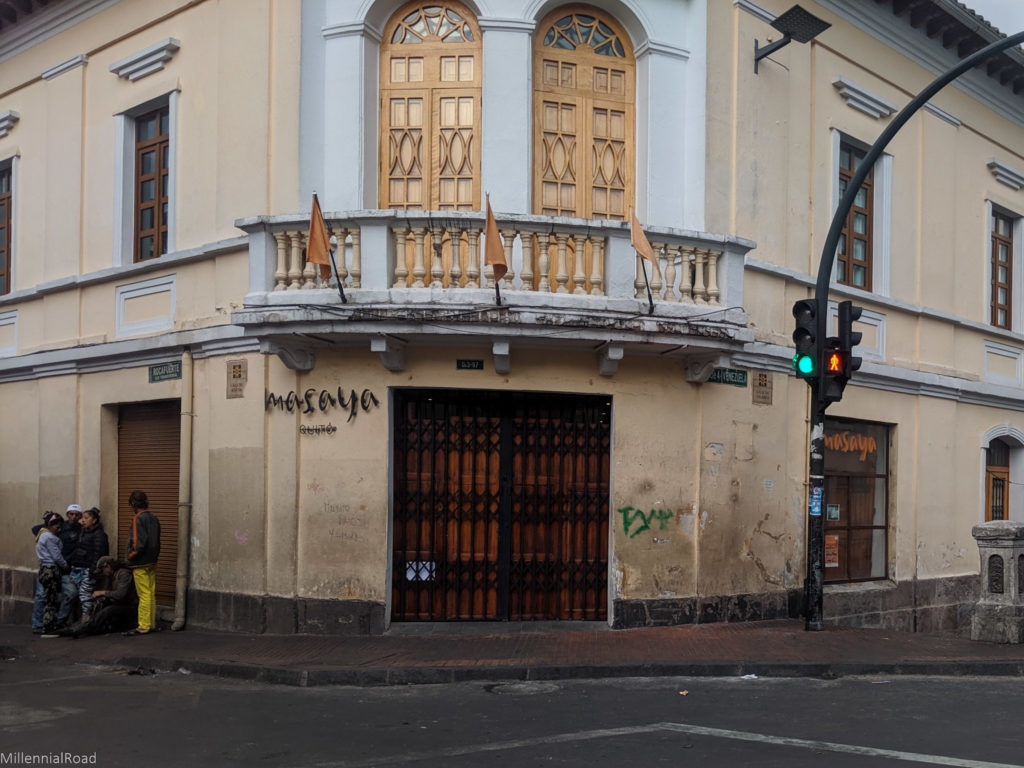
We frantically began searching for a new place to stay as our driver kindly drove us to a different part of the city.
When we finally made it safely to a new hotel – Hotel Reina Isabela – we let out a sigh of relief. The hotel staff was very accomodating and upgraded us to a suite (I suspect due to the circumstances). Still, we had no idea what we had in store over the coming days.
The government put a curfew into effect the next day due to the protests. The curfew was initially set for 3:00 in the afternoon but was later changed to a 24-hour curfew because the situation had continued to spiral out of control.
Despite our efforts to go elsewhere, we ended up being stuck in our hotel for three days without the ability to leave or see any of the city. Well, other than the madness we watched unfold from our hotel window.
The military and police had forced the indigenous protestors out of the downtown area, pushing much of the action into the neighborhood where we had relocated.
As we saw the protestors begin to fill the area surrounding our hotel, there was one thing that really stood out to me—countless members of the group were families, many with young children.
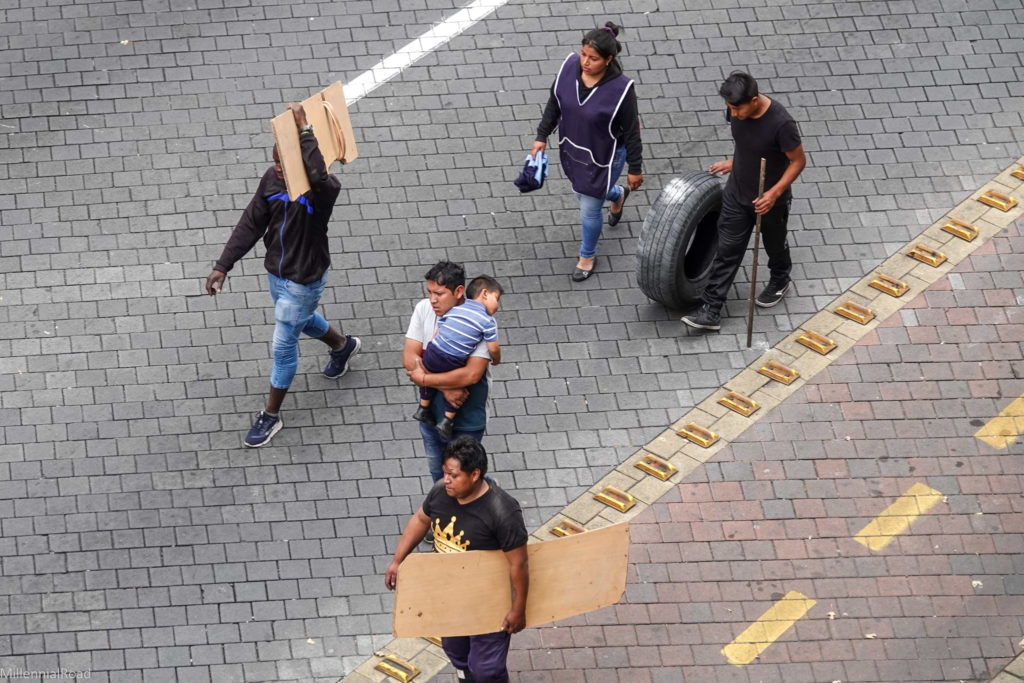
Initially, we could see large groups of protestors walking up and down the street in front of our hotel holding signs and chanting for their cause. Everything began very peacefully from our perspective.

The situation escalated quickly.
Soon we were watching protestors throw rocks, bricks, sticks, and any other debris they could find at the police. The protestors moved dumpsters into the middle of the street in front of our hotel.
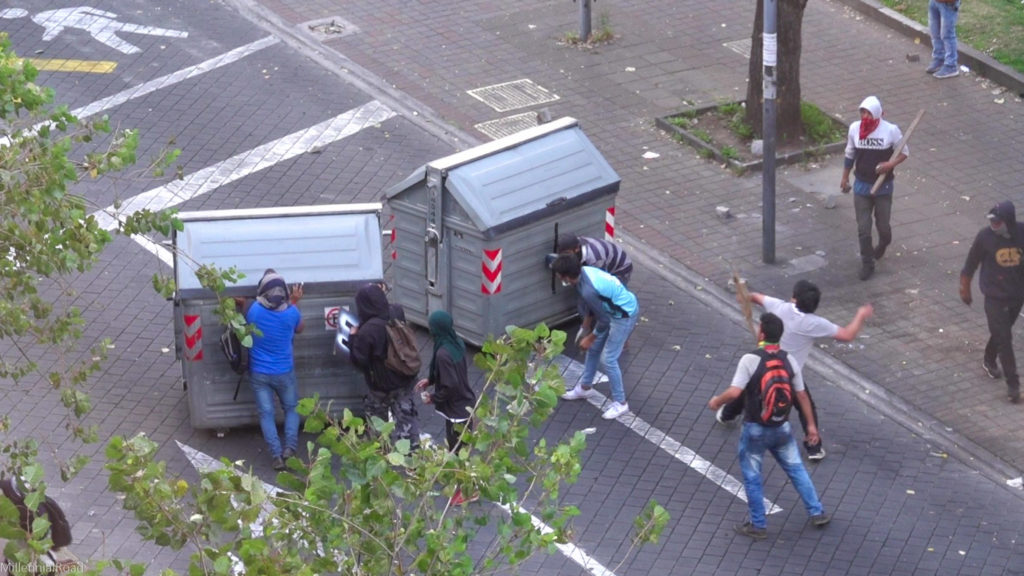
They used the dumpsters as shields to hide behind as they launched random items at the officers. The dumpsters also doubled as blockades to slow down the police vehicles.
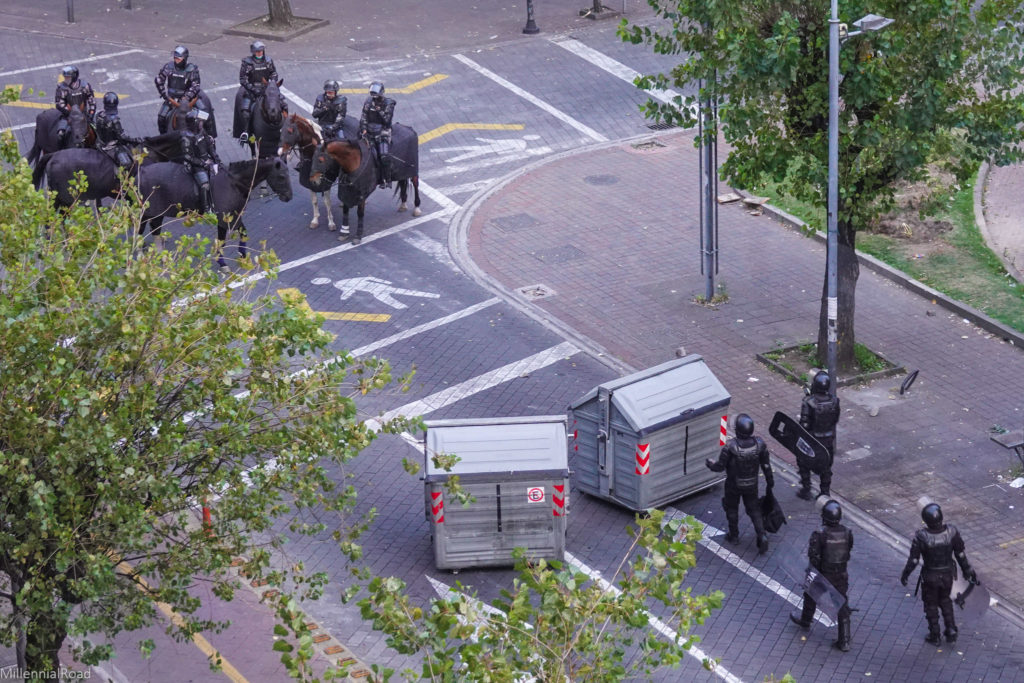
The police had shown up in full force, some riding horses, others wielding shields. Heavily armed and completely decked out in full tactical gear, they were ready for a fight.
The military had brought in tanks to clear off the nearby streets. This was no joke.
Before we knew it, the police were chasing protestors down the street and shooting guns filled with tear gas at them.
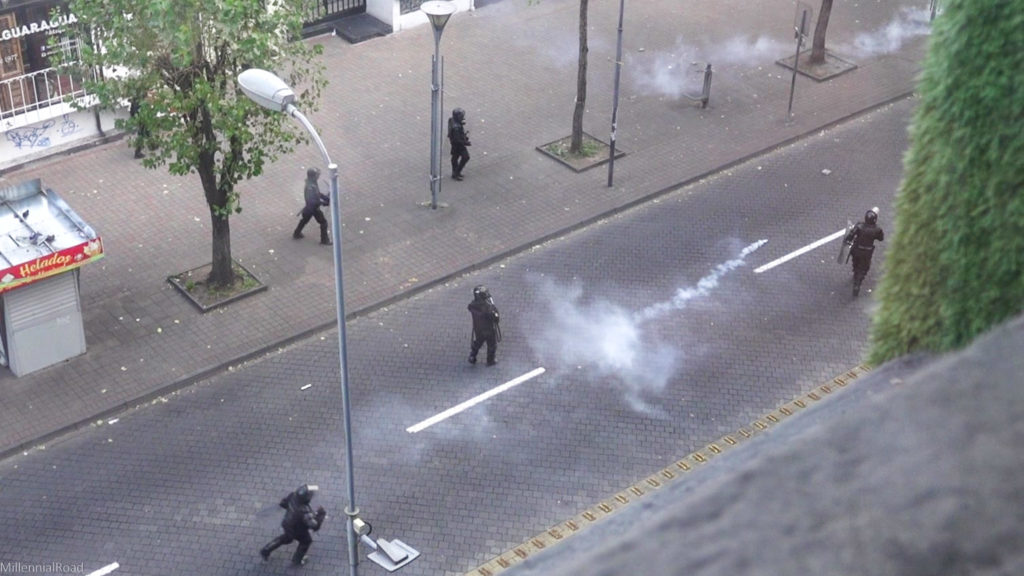
Nick opened our window at one point to get a closer look at the turmoil, and we could smell tear gas in our hotel room. We were four floors above the street, yet our eyes still burned from the brief contact.
Late into the evening, thousands across the city banged pots and made loud noises to show solidarity with the protestors. This went on for hours, each and every night. In certain countries, this is actually a popular form of protest known as a cacerolazo.
After being stuck in the hotel for three days while trying to find a way to leave, we finally had a small window of time available to risk the trip to the airport.
The blockades the rioters had put up along the roads leading to the airport had been partially cleared, but there was no guarantee of how long the road would remain passable.
The hotel staff informed us that they could arrange a ride for us to the airport, though they could not promise we would make it there.
Despite this, the staff recommended that we break curfew to attempt to get to the airport while we had a chance. We feared this would be a rare opportunity so we decided to take the risk.
The taxi service was only willing to take us to the airport for the following hour due to fear that things would escalate again. We frantically packed our bags and got ready to go as quickly as possible.
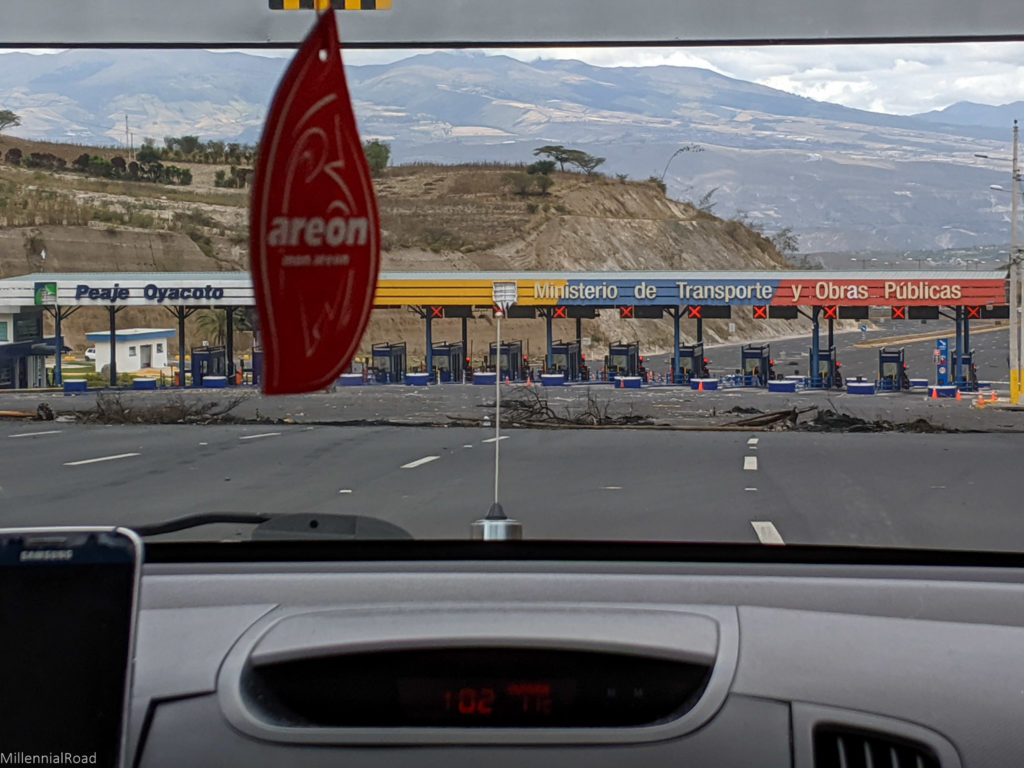
The ride to the airport was scary, to say the least.
There were countless blockades throughout the ride. Some were made of large heaps of sand; others were built of branches gathered into a massive pile and set on fire. The city felt like it was going up in literal flames around us.
Our taxi driver had to take an alternate route several times because it was impossible to pass on the road we were trying to take. He was also afraid. We could tell he was not comfortable making the trip either, which was all the more concerning.
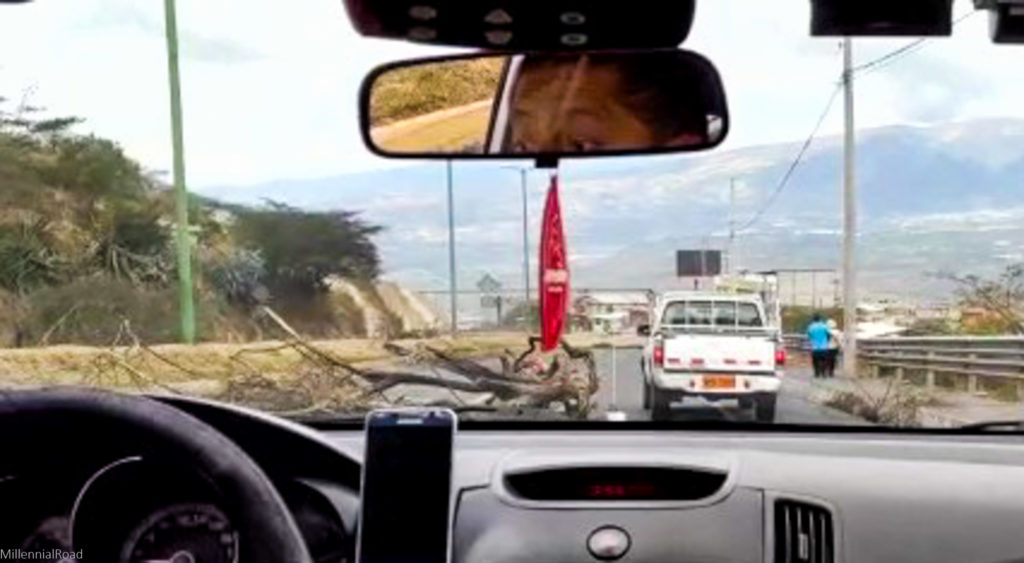
Several times our driver mentioned that he would have to just take us back to the hotel. I pled with him in broken Spanish to do whatever he could to help us get to the airport. He continued on.
I held back tears as we drove past one chaotic mess after another.
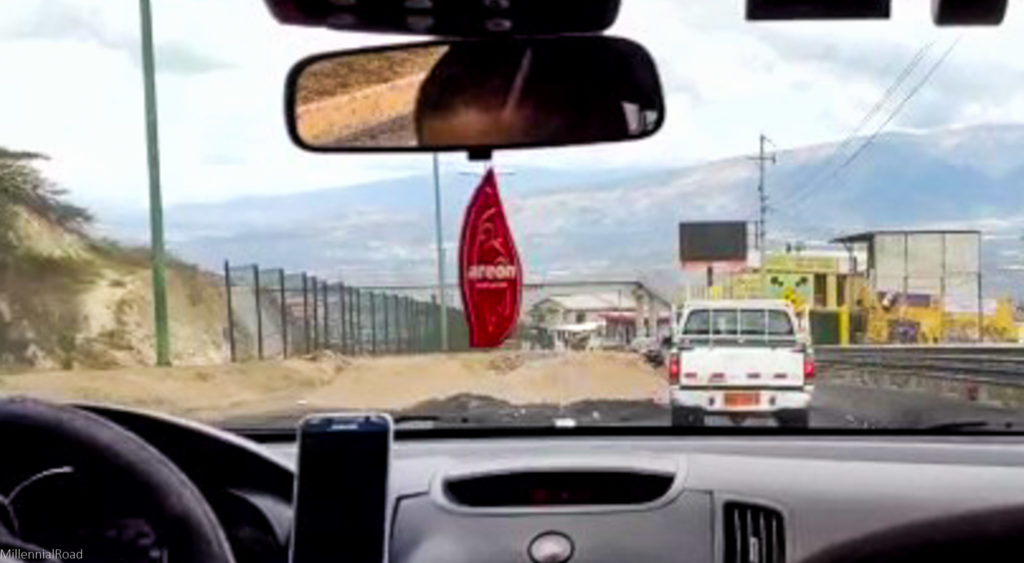
After countless detours and an unhealthy amount of anxiety, we finally made it to the airport. We repeatedly thanked our taxi driver, gave him a massive tip, and wished him a safe drive home.
It was comforting to have made it safely to the airport, but this was not the end of our adventure. The vast majority of the flights had been canceled because the workers could not get to and leave the airport either.
We ended up having to wait two days at the airport before a flight to the Galápagos Islands became available. During this time, we got to know the airport in Quito quite well. The various restaurants and shops were on a rotation of being open to allow the staff to sleep between shifts.
The food options were limited to what was still available from before the protests began. We happily ate what was available to us without complaint.
We bought a bottle of wine, found a quiet corner on the floor to get set up, streamed some Netflix with the spotty internet connection, and tried to make the best of it.
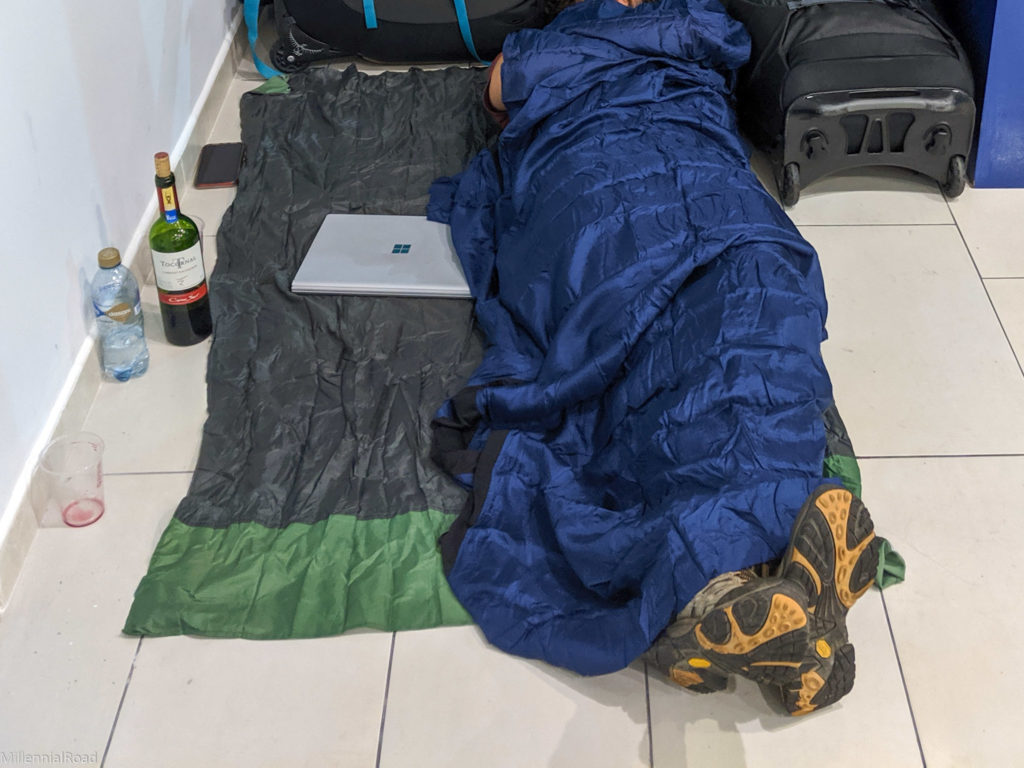
At around midnight on our first evening at the airport, the indigenous people and the government reached a verbal agreement. The entire airport celebrated (along with the whole city presumably), but there were still no flights available yet.
After approximately 48 hours of waiting at or near the airport, we finally caught a flight out to the Galápagos Islands. Whew, we could relax and enjoy the journey again!
Click the link to read more about some of the greatest wildlife experiences of our lives during our 15-day cruise around the Galápagos Islands.

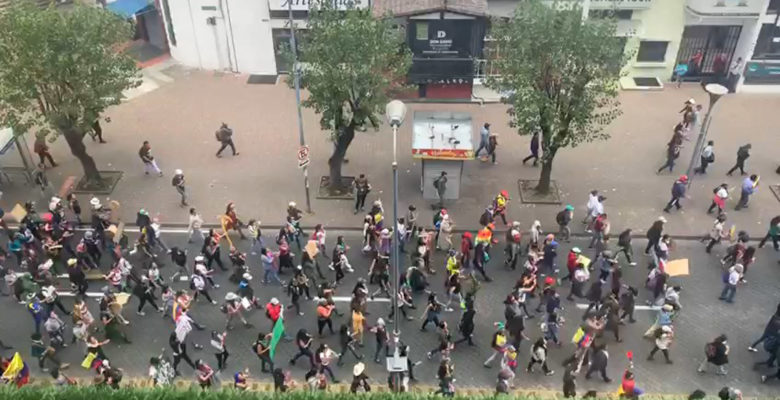
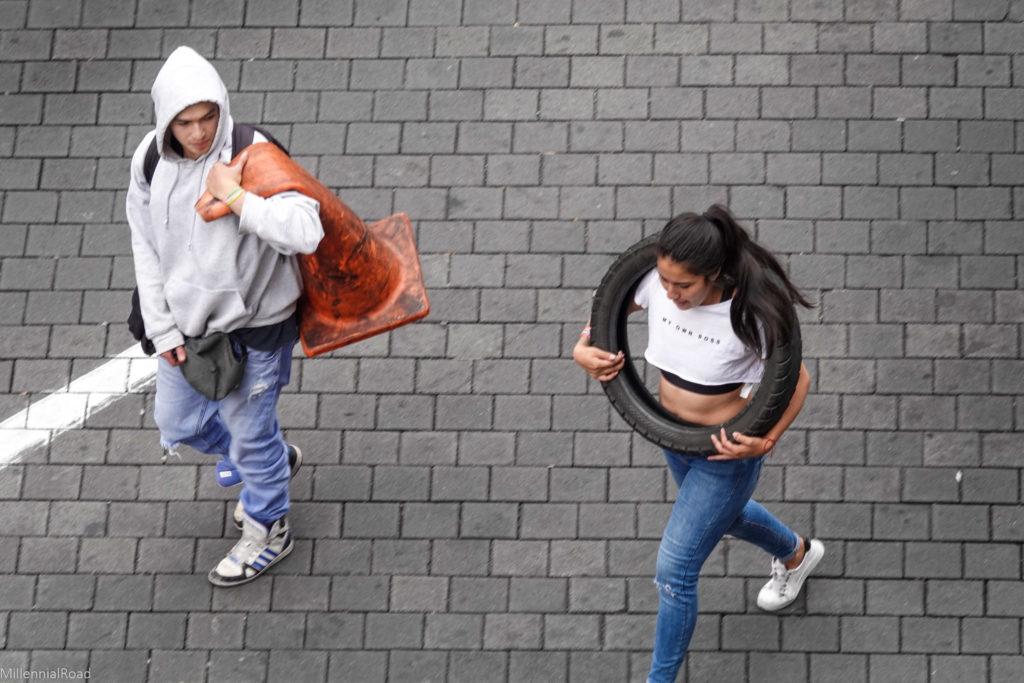
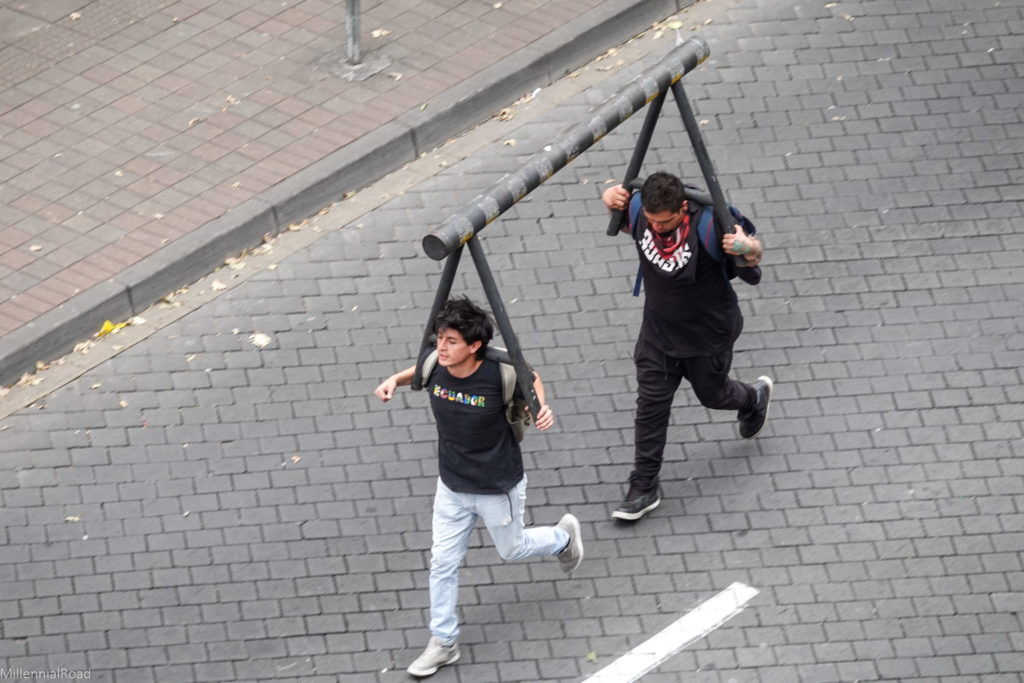
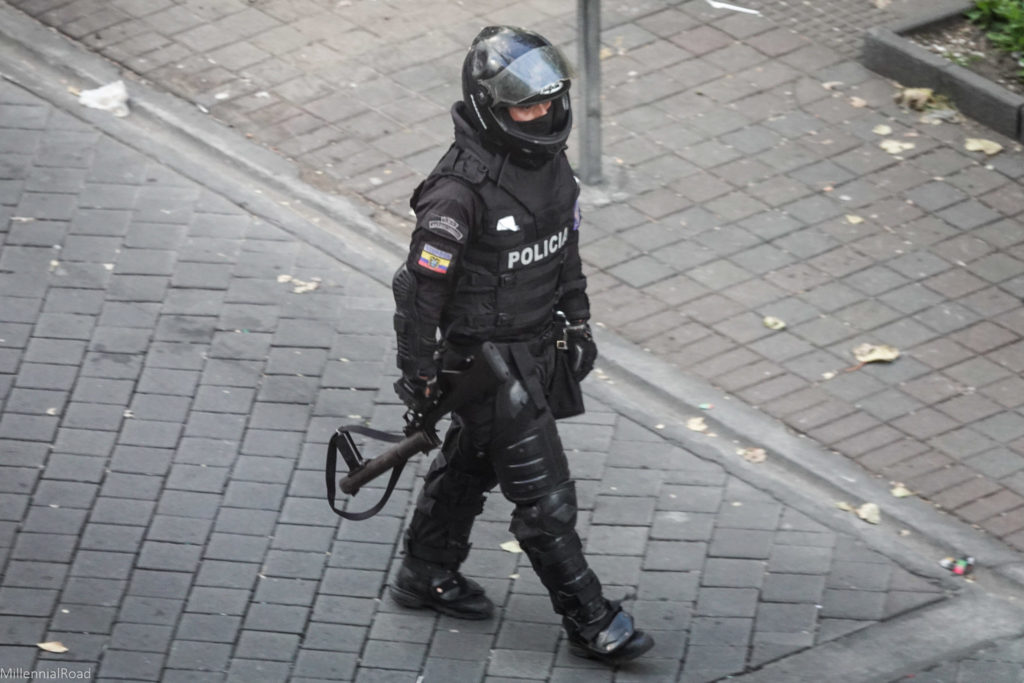
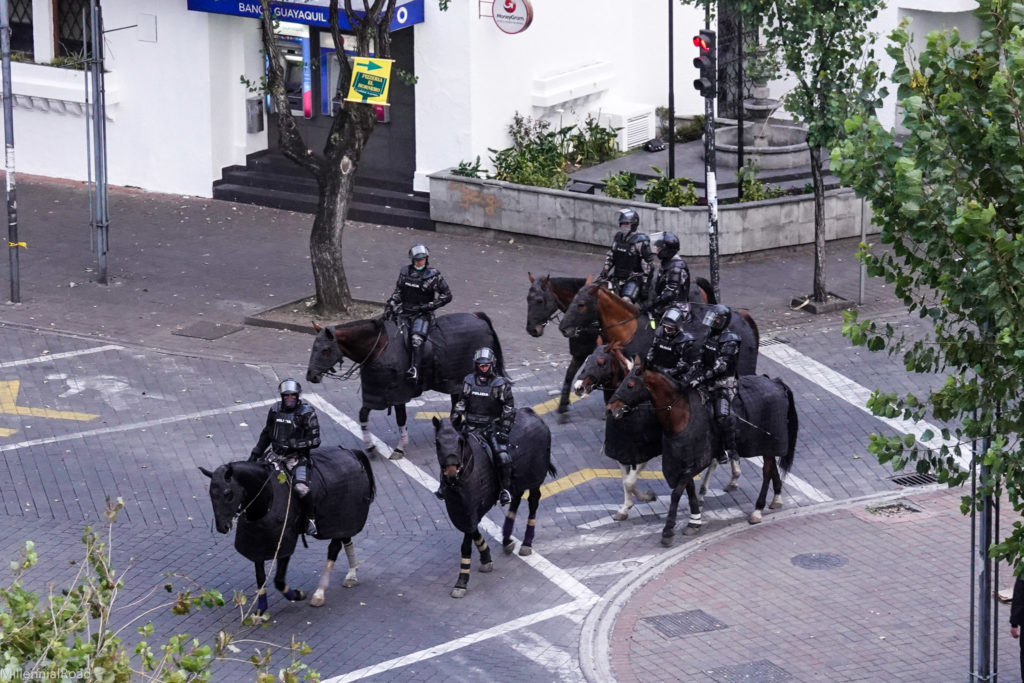
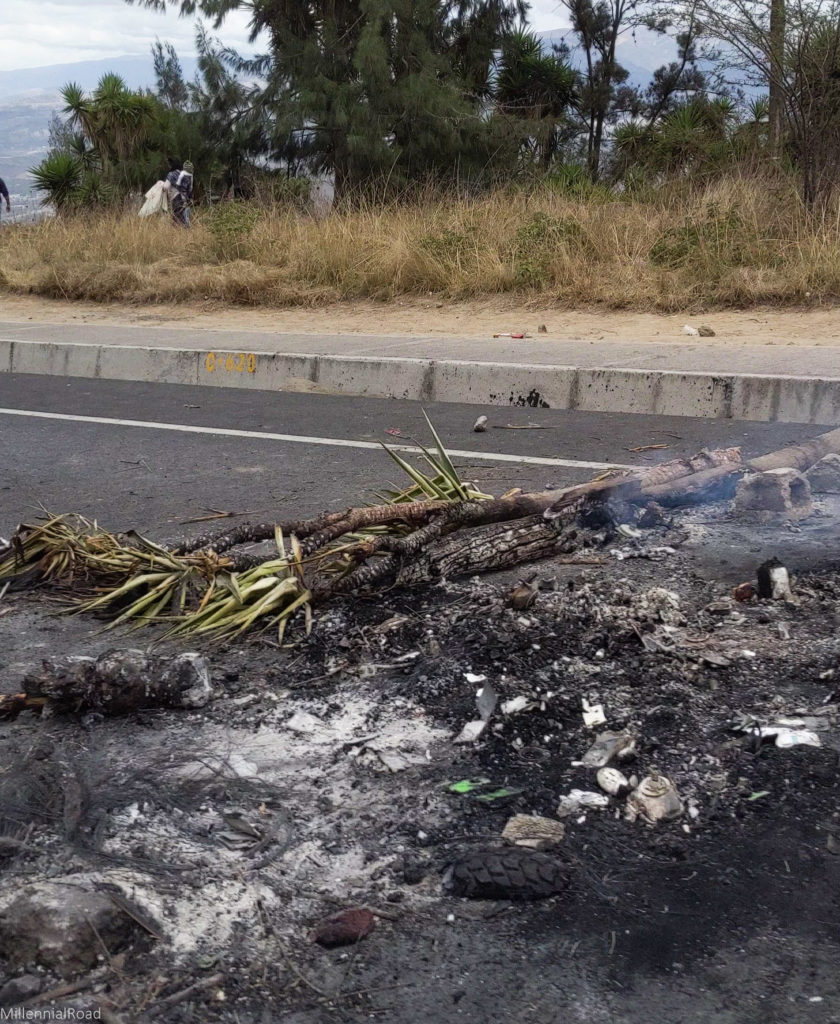
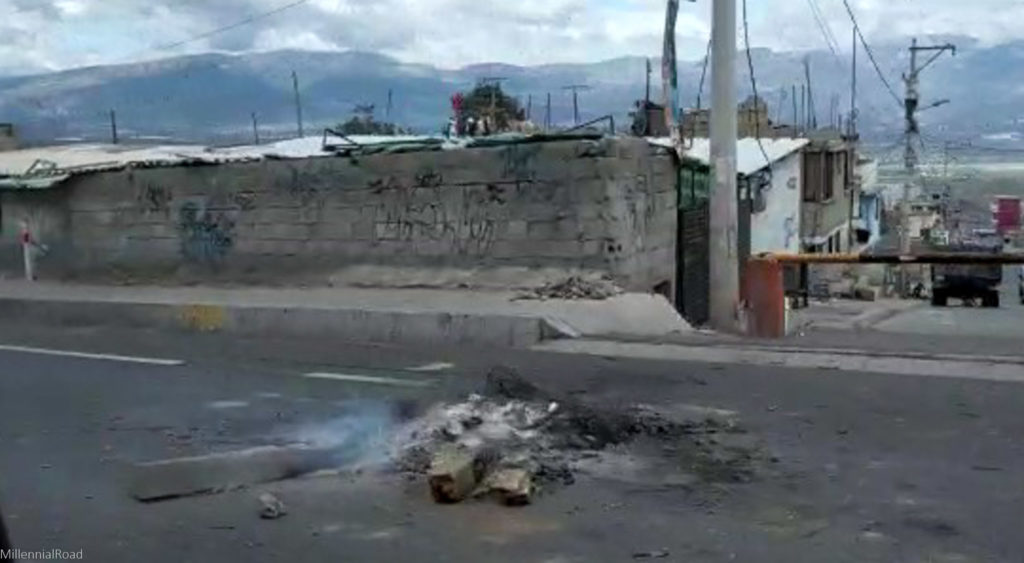
Leave a Reply